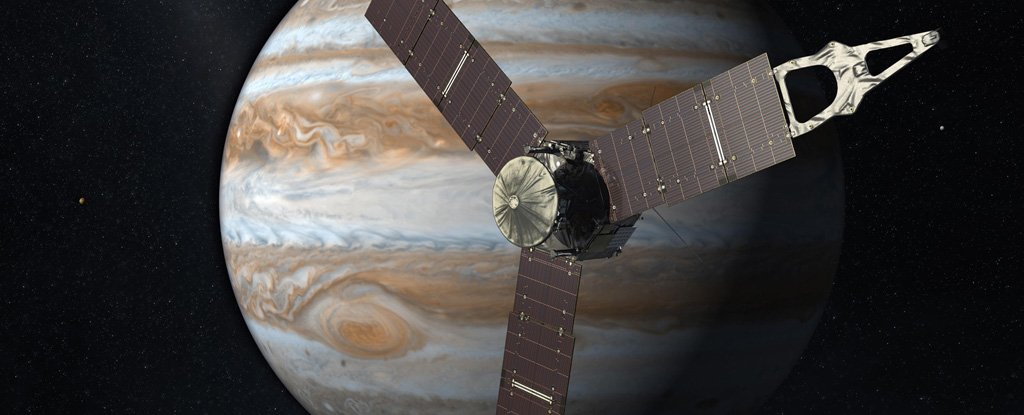MONTREAL – NASA’s Juno space probe is breaking records as it continues on its mission to Jupiter.

At 14:00 EDT on Wednesday, January 13, Juno became the most distant solar-powered spacecraft ever launched by humankind.
It had reached 793 million kilometres from the sun, breaking the 792 million kilometre record held by the European Space Agency’s Rosetta spacecraft. The Rosetta mission performed a detailed study of comet 67P/Churyumov-Gerasimenko and the water vapour contained within.
READ MORE: 5 cool things about the Rosetta mission
As the spacecraft’s distance from the sun increases, the solar radiation becomes exponentially weaker. Jupiter is five times farther from the sun than Earth, making the sunlight 25 times dimmer.

Get breaking National news
To collect as much of the sun’s radiation as possible, Juno is equipped with three 9-metre-long arrays packing in 18,698 solar cells.
Despite the decrease in solar energy, NASA is confident that the probe will continue functioning throughout its mission.
It is expected to reach its final destination in orbit around Jupiter on July 4, when it will be 832 million kilometres from our star.
From there it will orbit the planet 33 to 37 times collecting data on the physical makeup of the atmosphere.
Once the mission is over, the spacecraft will have traveled around 2.8 billion kilometres.



Comments